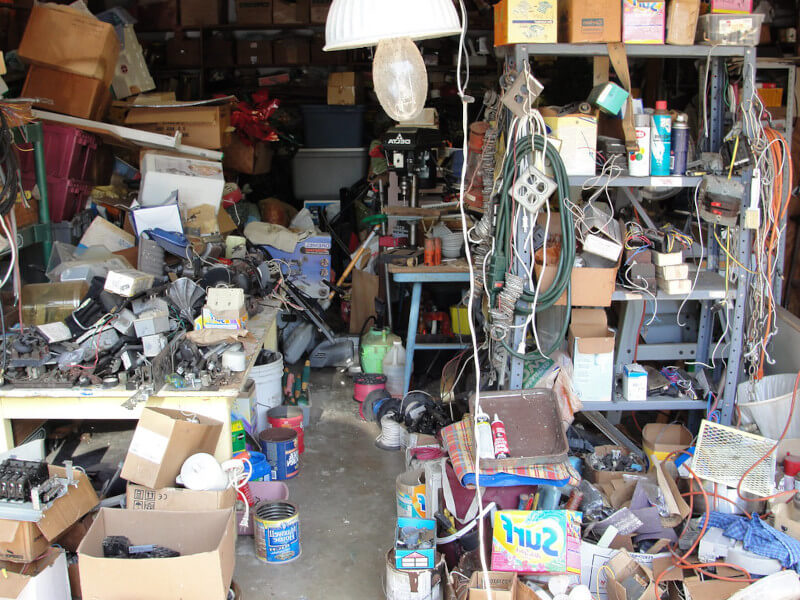Six Warning Signs You Might Have a Hoarding Disorder
It’s estimated that 2-6% of adults struggle with hoarding and that the condition does not discriminate based on gender. Although women are more inclined to seek therapy for it, statistics show that men experience it at a higher incidence.
People over the age of 55 are three times more probable to display hoarding behaviour than people under the age of 55, suggesting that the condition develops over time. However, hoarding behaviours often emerge throughout the formative years, especially the adolescent years, and worsen over time.
The term “hoarding” is a behaviour pattern characterised by an individual’s inability to part with material possessions, regardless of their condition (which can range from pristine to utter ruin). The success of the TV show Hoarders demonstrates that people are interested in the phenomenon of hoarding. This interest extends to both living and nonliving objects.
Similar to how we could stop what we’re doing to watch a catastrophe unfold or to check out a medical procedure on YouTube, people have a morbid fascination with the unusual and the shocking. The interest, however, can rapidly turn to dismay and even revulsion if you or somebody you care about is an active and persistent hoarder.
A recent systematic analysis of the literature discovered something pretty fascinating concerning hoarders and their cognitive ability, despite our tendency to assume they are “different than” or “less than” the rest of us. (Stumpf, 2022). There were no significant differences between hoarders and controls in terms of focus, episodic memories, working memory, data processing speed, organising, making choices, inhibition, linguistic fluency, or visuospatial ability.
There was just a distinction in the ability to classify things. You could be thinking, “Yes, that makes sense,” after reading this discovery. Hoarders experience great distress when urged to begin decluttering and eliminating items. There may be a domino effect on our capacity to classify broadly if we can’t tell the difference between the value of an item and the value/characteristics of an item.
Hoarders, Mess Accepters, and Collectors
If you want a “cheat sheet” to help you figure out whether an individual is a collector, clutter-tolerant, or hoarder, consider the following:
Items in a collection are carefully curated, and the whole only makes sense when taken as a whole. The intention is revealed through collecting. Collectors place a high monetary and sometimes even sentimental value on the items they amass. But they don’t just collect “junk” at random. Every purchase, whether it be a replica, a mug, an item based on a favourite character, or a piece of film memorabilia, is made with thought and affection.
People who aren’t bothered by clutter may use piles on flats to save things they haven’t “processed” just yet. Stacks of clothing, whether soiled or clean, on a chair, the floor, or the bed constitute bedroom clutter. somewhere other than the hamper or drawers. Before the widespread availability of newspapers, periodicals, books, and mail online, physical copies of these products were ordinary household clutter. It’s possible that this change assisted some people in reducing clutter.
The most typical sources of clutter, however, continue to be empty shipping containers, packaging supplies, take-out containers, empty drink cans or bottles, and soiled dishes. This mess usually accumulates from the ground up in storage areas like cellars, attics, and closets. Most people are aware of the messiness of their living spaces, dislike it, and know that this is not an ideal way to live.
Hoarders have an emotional investment in their surplus belongings and cannot determine what should be discarded and what should be kept as potential future investments. It’s not uncommon to find valuable goods jumbled in with trash in a cluttered space. Because of their “clutter blindness,” hoarders often don’t see the dangers posed by the filth and dangers lurking in their own homes.
Entering the Hoarder’s House Despite the Dangers

If the hoarded objects contain food scraps or dead animals, the odour may greet you at the door even before you enter the hoarder’s home. Some people might not even bother to go in if they catch a whiff of rancid food, animal pee, or faces. You won’t be able to sit down anywhere inside since all the flat surfaces are covered in junk, clutter, or even brand-new products with their price tags still on them.
Overflowing piles of junk in some rooms may make them inaccessible because they block the hallway or the entryway. Clutter in the home can make it difficult, if not impossible, for the occupants to do even the most fundamental of duties. It’s not uncommon for people to start using their bathrooms as storage space, including their bathtubs and showers, their kitchen countertops, and even their ovens and refrigerators. Because the hoarder may be unable to leave the house due to physical or mental health concerns, the further effort may be required to help them receive treatment for their disease. Click here to get in touch with an rehab counselling service based in Johannesburg.
The Signs of Hoarding Disorder Are as Follows
Individuals with hoarding disorder vary in their ability to recognise the harmful nature of their hoarding-related thoughts and actions. Many people who develop hoarding tend to do so after experiencing a stressful or traumatic event, including the breakup of a marriage or the loss of a close family member. Those who suffer from hoarding disorder have a compulsive drive to hoard their stuff. Additional symptoms consist of:
- Lack of ability to discard unnecessary items.
- Discarding things causes you a lot of mental and physical strain.
- Worry over a lack of resources in the future.
- Having trouble deciding where to put things.
- Fear of having one’s belongings touched by anyone other than themselves.
- Having to make do with cluttered quarters.
- Isolating themselves from their loved ones.
Items may be hoarded for any of the subsequent reasons in people with hoarding disorder:
- They have a premonition that something will come in handy or be of high value down the road.
- Someone believes an item is irreplaceable because of its sentimental significance, rarity, or both.
- A big deal is too good of an opportunity to waste, in their opinion.
- They hope that by possessing this object, they will be reminded of a special person or event.
- They have no idea where to put something, therefore they end up hoarding it.
Problems with memory, attention, and processing speed are common among those with hoarding disorder:
- Indecisiveness
- Perfectionism
- Procrastination
- Disorganisation
- Distractibility
- The severity of their hoarding disorder and their ability to function can both be negatively impacted by these factors.
- Those who suffer from hoarding disorder are those who have difficulty letting go of possessions.
- Many people with hoarding disorder struggle with the condition from their teenage years into their early to mid-thirties.
- People over the age of 60 and those who suffer from anxiety and depression are at greater risk of developing hoarding disorder.



